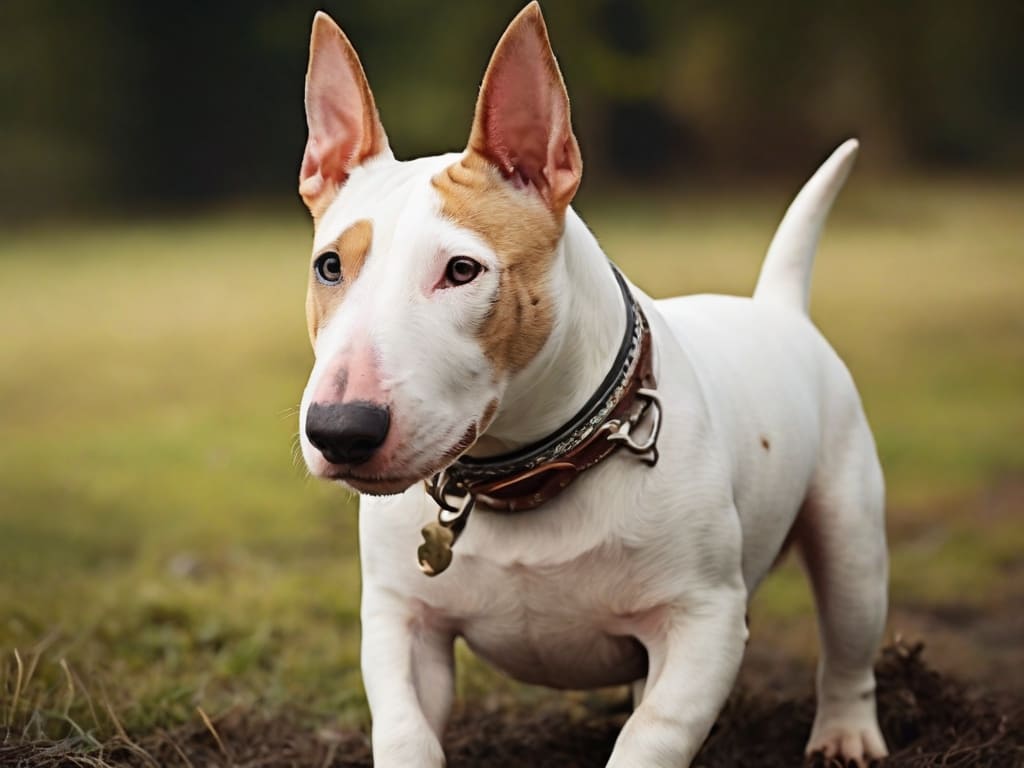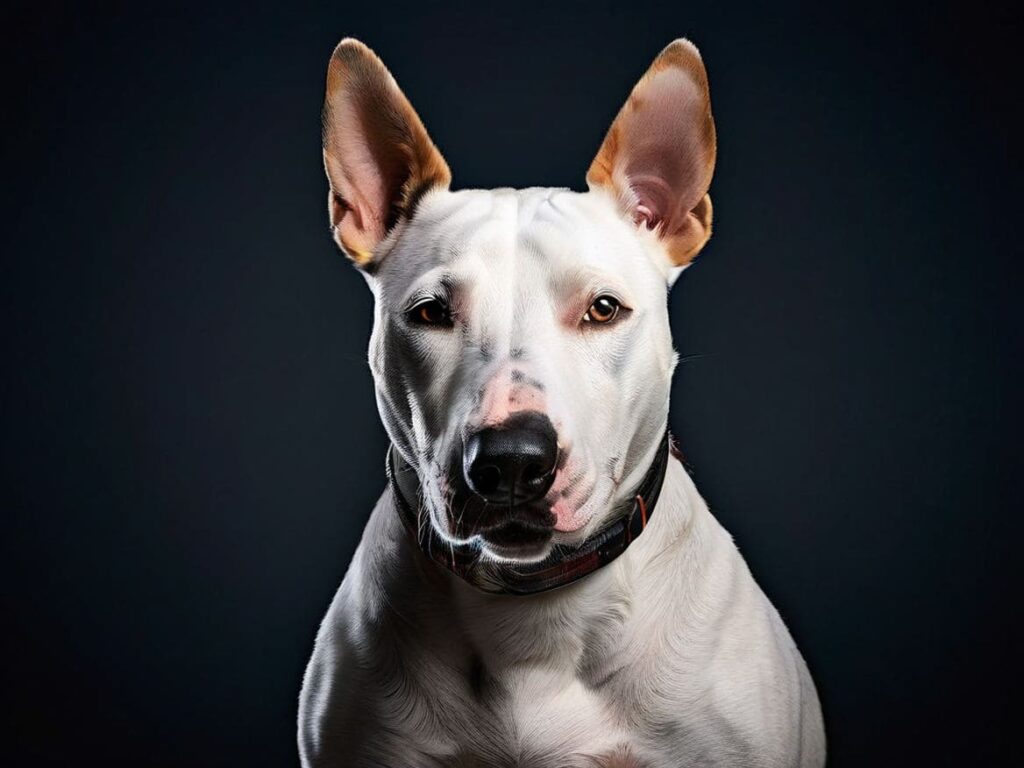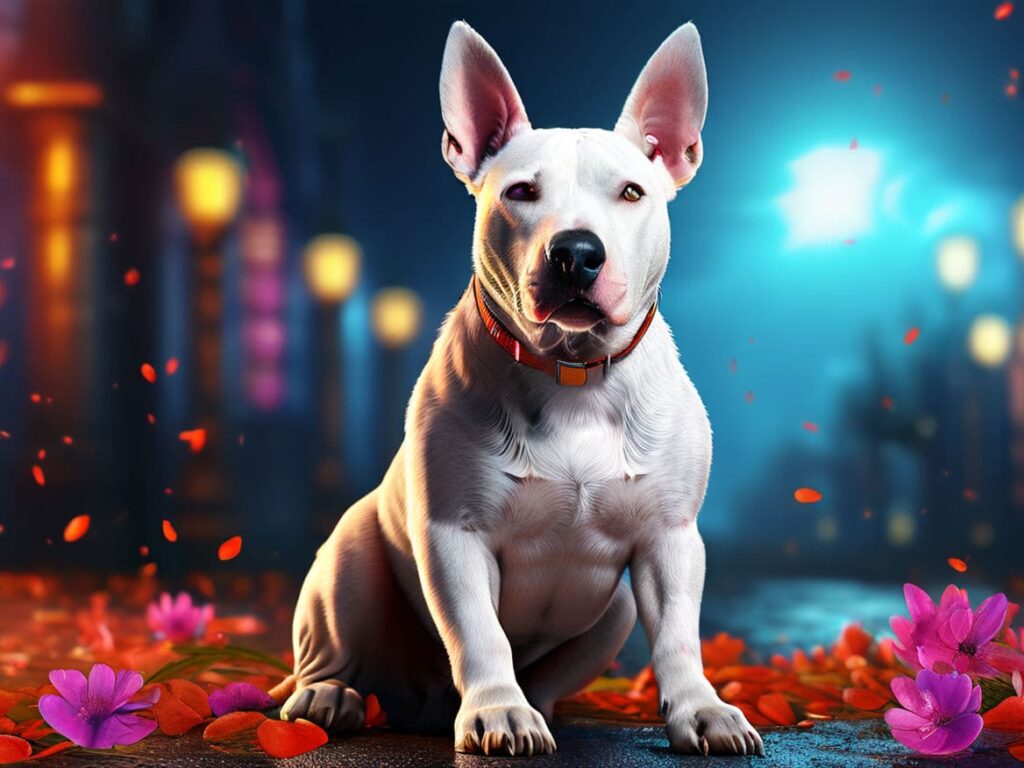The Bull Terrier Dog: A Complete Guide
When you hear the name “Bull Terrier,” you might picture that iconic egg-shaped head and playful, sturdy demeanor. Bull Terriers are a unique breed, known for their muscular build and loving nature. If you’re considering adopting a Bull Terrier or are simply curious about this loyal and distinctive dog breed, this comprehensive guide will walk you through everything you need to know.
What is a Bull Terrier Dog?

The Bull Terrier is a breed that stands out, both physically and in terms of personality. Known for its oval head, stocky frame, and mischievous expression, the Bull Terrier was initially bred as a fighting dog in the 19th century. Over time, it has transformed into a loyal companion with an energetic, protective, and loving disposition.
The History of Bull Terriers
The Bull Terrier originated in England in the early 1800s. Bred from Bulldogs and Old English Terriers, the Bull Terrier was initially designed to be a fighter in blood sports like bull-baiting. After these sports were outlawed, the breed became more of a companion animal, valued for its loyalty and friendly nature. The breed continued to evolve, and by the 1900s, the Bull Terrier had gained its modern look and reputation as a family pet.
Understanding the Bull Terrier’s Unique Appearance
Head Shape and Features

Perhaps the most defining characteristic of the Bull Terrier is its head. It has a distinct egg-shaped, almost flat-topped skull. Their small, triangular eyes give them an inquisitive, almost mischievous look that has made them a favorite in pop culture.
Muscular Build
Bull Terriers are medium-sized dogs, typically weighing between 50-70 pounds, but their muscular bodies make them seem much larger. Their strong build is perfect for activities requiring stamina and strength.
Bull Terrier Temperament and Personality

Bull Terriers are often described as being playful and full of energy. However, they also have a stubborn streak, making training a necessity. Let’s dive deeper into what makes this breed so unique:
Energetic and Playful
Bull Terriers are incredibly energetic dogs, often described as having a “clownish” personality. They love to play and are particularly fond of games that involve physical activity, like fetch or tug-of-war.
Loyal and Protective
While Bull Terriers are affectionate and playful, they also have a protective nature. They’re known to be loyal to their families and can sometimes be suspicious of strangers, making them excellent watchdogs.
Independent but Social
Though Bull Terriers are known for their independence, they thrive on human companionship. They don’t like to be left alone for long periods and may develop behavioral issues if they feel neglected.
Potential Challenges in Training
Training a Bull Terrier can sometimes be challenging due to their independent nature. Early socialization and consistent training are crucial to ensure they grow into well-behaved adults. Positive reinforcement methods, like treats and praise, tend to work best with this breed.
Is a Bull Terrier the Right Dog for You?

Owning a Bull Terrier comes with responsibilities. It’s not just about providing food and shelter; it’s about meeting their physical, emotional, and mental needs.
Ideal Living Conditions
Bull Terriers do well in various living environments, from apartments to homes with large yards. However, they require daily exercise to burn off their excess energy. If you’re a couch potato, this might not be the dog for you.
Exercise and Mental Stimulation Needs
Because they’re so energetic, Bull Terriers need regular physical activity. A daily walk, along with some time to play and explore, is essential to keep them happy and healthy. Mental stimulation is equally important. Puzzle toys or interactive games are excellent ways to keep them engaged.
Family and Social Compatibility
Bull Terriers generally get along well with families, especially if they are socialized from a young age. They can be great with children, but due to their strength and energy, supervision is always recommended.
Health and Lifespan of Bull Terriers

Like all breeds, Bull Terriers are prone to specific health issues. Knowing what to look out for can help you keep your Bull Terrier in top shape.
Common Health Issues
Skin Conditions
Bull Terriers are prone to skin allergies and conditions such as dermatitis. Regular grooming and monitoring of their skin can help prevent flare-ups.
H4: Deafness
White Bull Terriers, in particular, are prone to congenital deafness. This condition can be detected early through hearing tests.
Kidney Disease
Some Bull Terriers may develop kidney disease later in life. Regular vet check-ups can help detect issues early on and provide the best treatment options.
Lifespan
The average lifespan of a Bull Terrier is between 10 to 14 years. With proper care, regular exercise, and a healthy diet, many Bull Terriers live long, happy lives.
Grooming and Care Tips
Bull Terriers are relatively low-maintenance when it comes to grooming, but regular care is still essential to keep them looking and feeling their best.
Coat and Skin Care
Bull Terriers have short, stiff coats that are easy to maintain. Weekly brushing with a soft-bristle brush can help reduce shedding and keep their coat shiny.
Bathing and Hygiene
Because of their short coat, Bull Terriers don’t need frequent baths. A bath every month or so is usually sufficient unless they get particularly dirty.
Nail and Ear Care
Keeping your Bull Terrier’s nails trimmed is important for their comfort. Additionally, regular ear cleaning can help prevent infections.
Feeding and Nutrition
A well-balanced diet is essential for a healthy Bull Terrier. Here’s what you need to know about their nutritional needs.
Choosing the Right Dog Food
Bull Terriers do well on high-quality commercial dog food that is appropriate for their age, size, and activity level. Some owners opt for a raw or homemade diet, but it’s essential to consult a vet before making any drastic changes to their feeding regimen.
How Much to Feed Your Bull Terrier
Bull Terriers should be fed based on their weight, age, and activity level. Typically, they’ll need around 2 to 3 cups of dry food per day, split into two meals.
Training Your Bull Terrier
Training is essential for a well-behaved Bull Terrier. Starting early and using the right techniques can make all the difference.
Socialization
Early socialization is key. Introducing your Bull Terrier to new people, pets, and environments while they’re young will help them grow into a confident, well-rounded adult dog.
Basic Commands
Teaching basic commands like “sit,” “stay,” and “come” can help establish a positive relationship with your Bull Terrier. These commands are not just for show—they can also keep your dog safe in potentially dangerous situations.
Positive Reinforcement
Using positive reinforcement methods like treats, praise, and playtime is the most effective way to train a Bull Terrier. Harsh methods can make them more stubborn or even fearful.
Conclusion: Is a Bull Terrier Right for You?
In summary, Bull Terriers are energetic, loyal, and full of personality. They make excellent family pets for those who can keep up with their exercise needs and are willing to put in the time for training. If you’re looking for a dog that’s as fun-loving as it is protective, the Bull Terrier might just be the perfect companion for you.